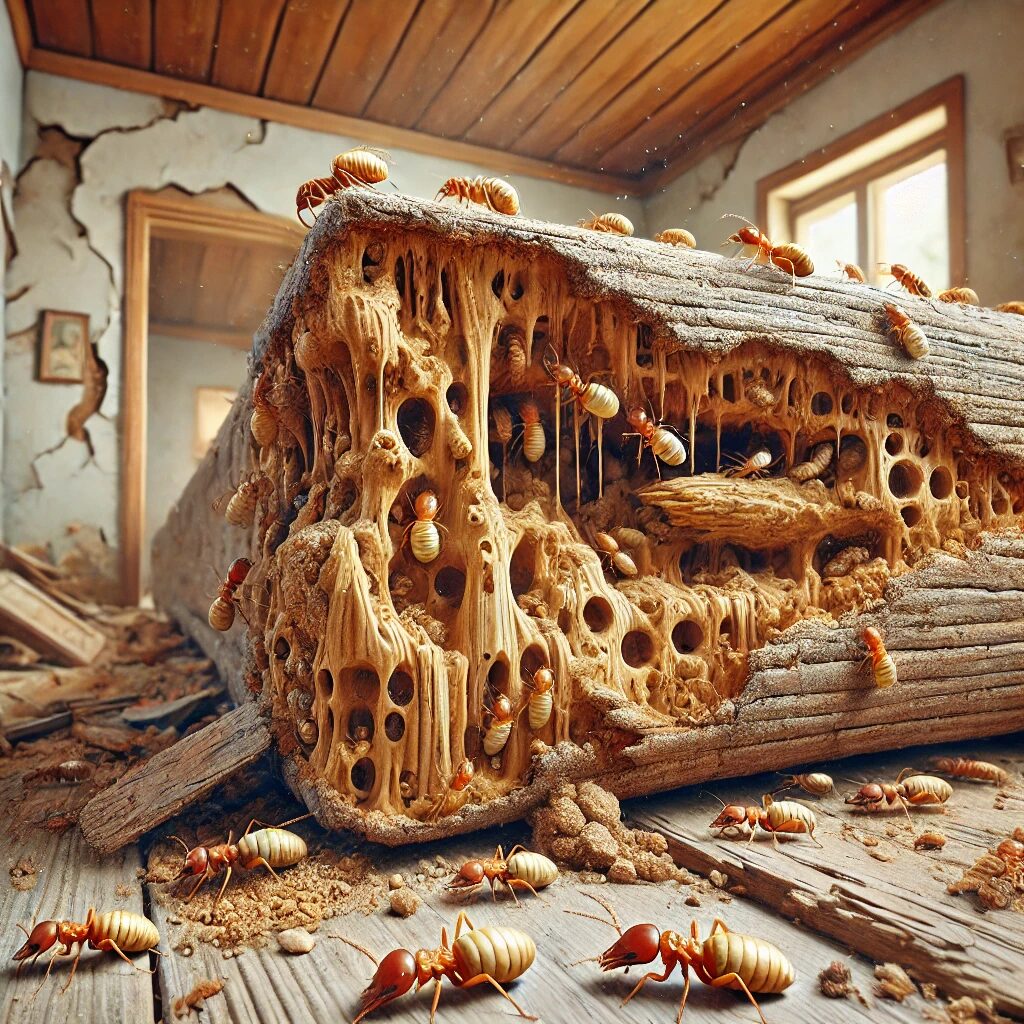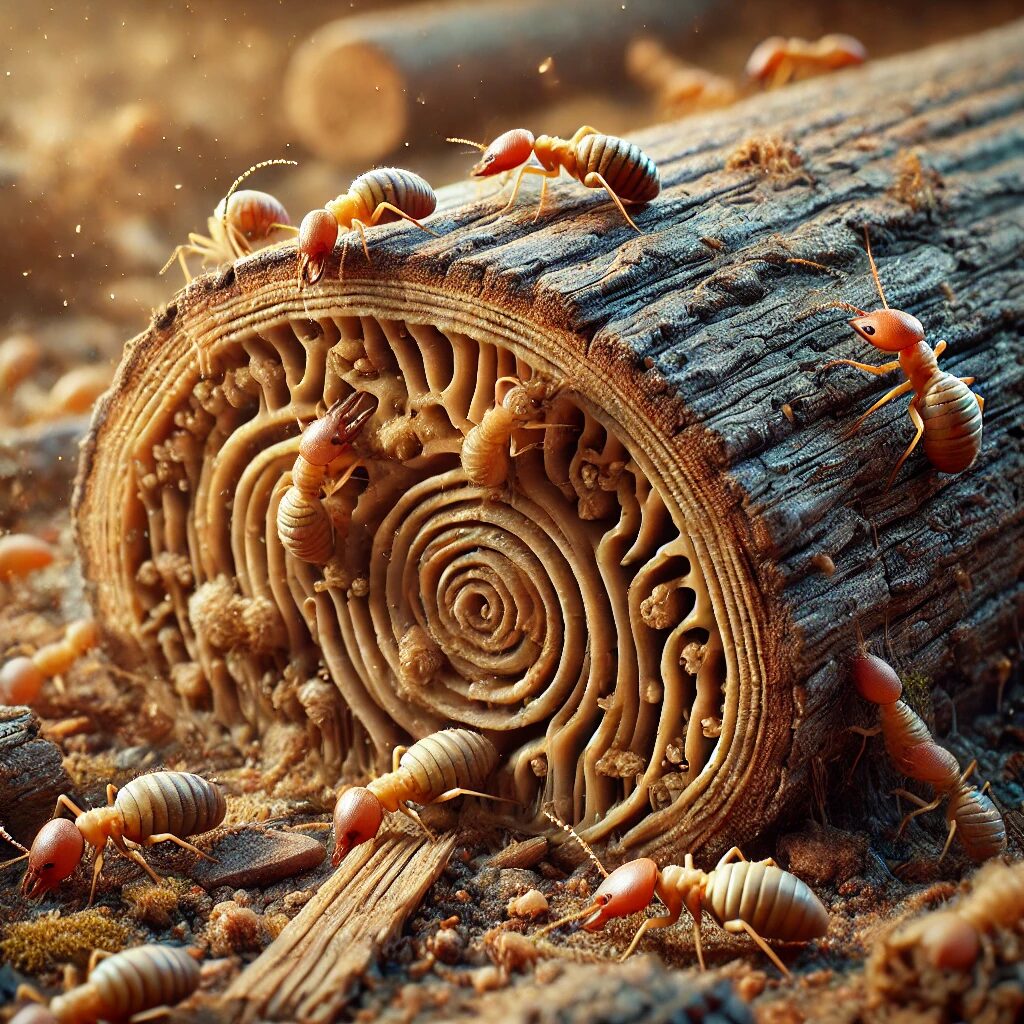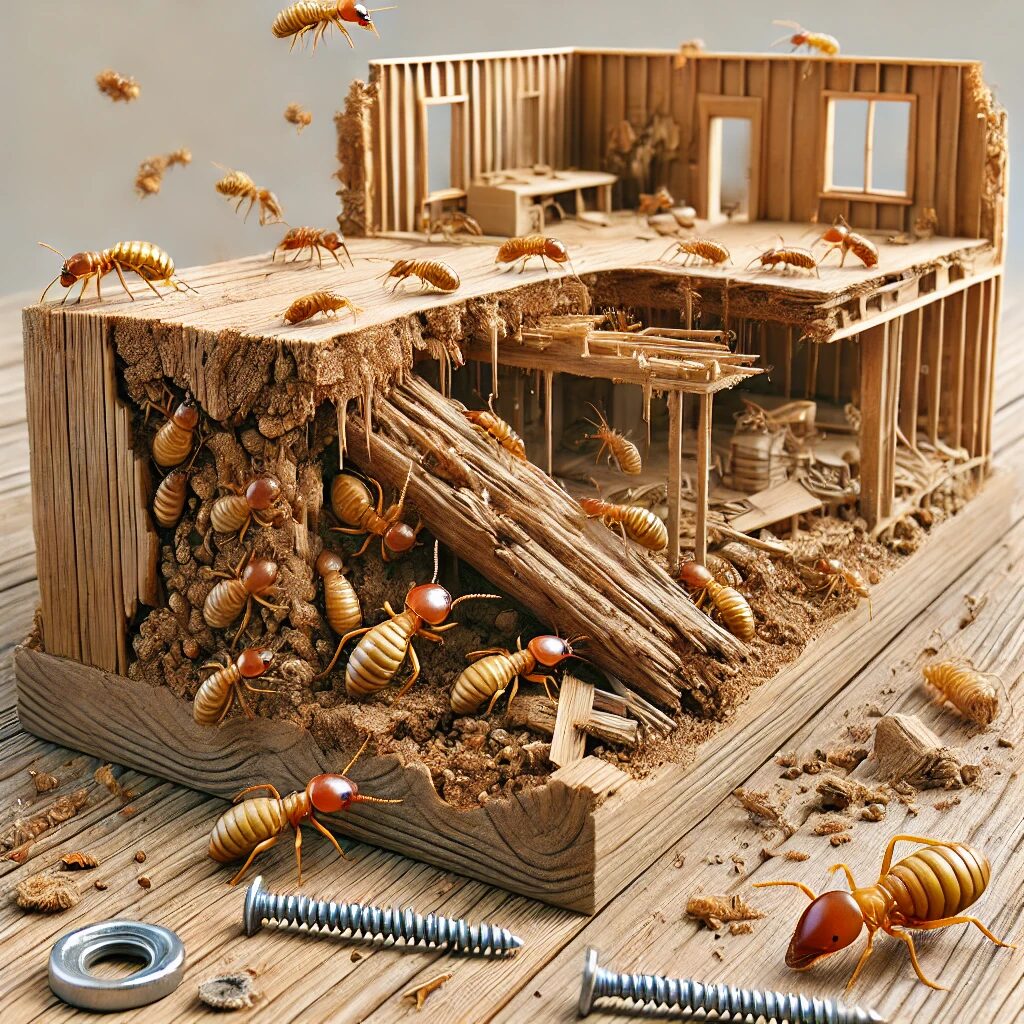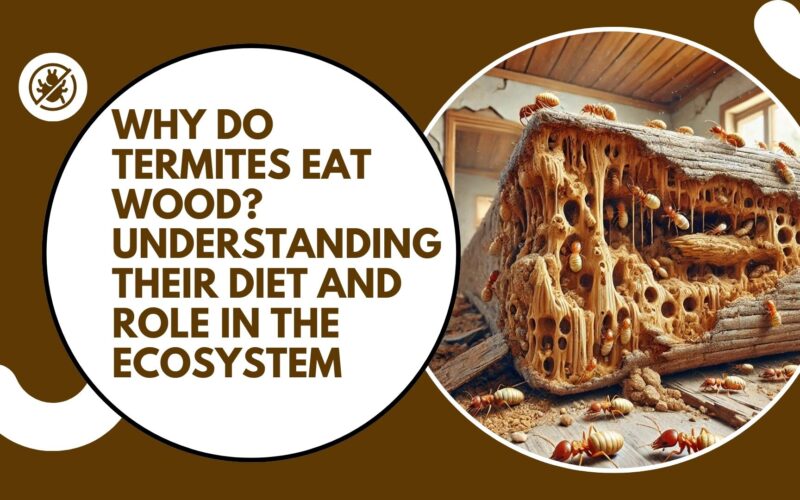
Why do termites eat wood? Their craving goes beyond hunger, rooted in a unique biology that turns wood into essential fuel for their colonies.
The question of why do termites eat wood is one that intrigues homeowners and ecologists alike. Termites are known for their ability to consume wood rapidly, but this behavior is not just about satisfying their hunger—it’s a complex process driven by their dietary needs and unique digestive adaptations.
We can better understand how these insects sustain themselves, the ecological roles they play in nutrient cycling, and why they are drawn to human structures by exploring why termites eat wood
The Nutritional Basis: Why Do Termites Eat Wood?

To understand why do termites eat wood, we must first understand their nutritional needs. Termites consume wood because it is rich in cellulose, an essential component of plant cell walls that provides termites with a primary energy source.
Unlike many animals, termites can derive energy from cellulose, which makes up the bulk of wood. This dietary preference is not merely incidental, why termites eat wood is directly related to their requirement for this complex carbohydrate.
Termites gain sustenance, fueling their bodies and supporting the needs of the entire colony, by breaking down cellulose.
How Termites Digest Cellulose: Symbiosis with Microorganisms
A closer look at why termites eat wood reveals a fascinating biological partnership between termites and certain microorganisms. Termites alone cannot digest cellulose, instead, they rely on a community of bacteria and protozoa in their guts to produce enzymes that break down cellulose into absorbable nutrients.
This symbiotic relationship is a core reason why termites eat wood—the microorganisms enable termites to unlock the nutritional value within wood, making this partnership essential to their survival.
Through this digestion process, cellulase enzymes transform cellulose into simpler sugars, providing a continuous energy supply. This biological adaptation is crucial to understanding why termites eat wood and explains their reliance on wood as a primary food source.
Ecological Role: Why Do Termites Eat Wood in Natural Environments?
Another layer of why termites eat wood is their role as ecological decomposers. Termites help recycle nutrients back into the soil by breaking down dead wood and plant material in forests and grasslands.
This process, called decomposition, is essential for ecosystem health because it releases nutrients that plants and other organisms rely on. Understanding why termites eat wood sheds light on their value in ecosystems, as their feeding activity contributes to soil fertility and supports plant growth.
By converting wood into organic matter, termites facilitate nutrient cycling, helping maintain balanced and biodiverse ecosystems. In natural settings, why do termites eat wood is not only about their own survival but also about promoting ecological sustainability.
Why Do Termites Eat Wood in Human Structures?

The question of why do termites eat wood takes on a new significance when we consider the damage they cause in human-built environments.
Termites are naturally drawn to wood-rich areas, including homes and buildings, where they find timber, furniture, and other wooden structures. Their attraction to these structures is often due to ideal environmental conditions, such as moisture and shelter.
Recognizing why do termites eat wood in homes helps homeowners identify the conditions that invite termites and the potential for structural damage. When termites establish colonies in buildings, they feed on foundational wood elements, which can lead to costly repairs and compromise structural integrity.
Understanding why termites eat wood in this context is crucial for implementing preventative measures that reduce the risk of infestation.
Preventing Termite Damage: Solutions for Homeowners
Homeowners can reduce termite attraction by controlling moisture levels around their property, as termites are more likely to infest damp wood. Regular inspections, particularly in crawl spaces and basements, can help detect early signs of termites.
Sealing cracks in foundations and treating vulnerable wood with termite-resistant materials are additional strategies that leverage our knowledge of why do termites eat wood to protect homes.
Homeowners can take steps to mitigate the risk of termite damage, by understanding the factors that attract termites, such as accessible wood and moisture.
Conclusion
The answer to why do termites eat wood lies in a combination of their nutritional needs, digestive adaptations, and ecological functions. Termites consume wood primarily to access cellulose, an energy-rich compound that sustains their colonies, thanks to the help of symbiotic microorganisms in their digestive systems.
In natural ecosystems, why termites eat wood goes beyond nutrition, as their wood-feeding habits play a critical role in nutrient cycling and soil health. In human environments, however, why termites eat wood translates into a need for vigilant prevention to avoid costly structural damage.
Recognizing why termites eat wood empowers us to protect our homes while appreciating the ecological contributions of these unique insects.
